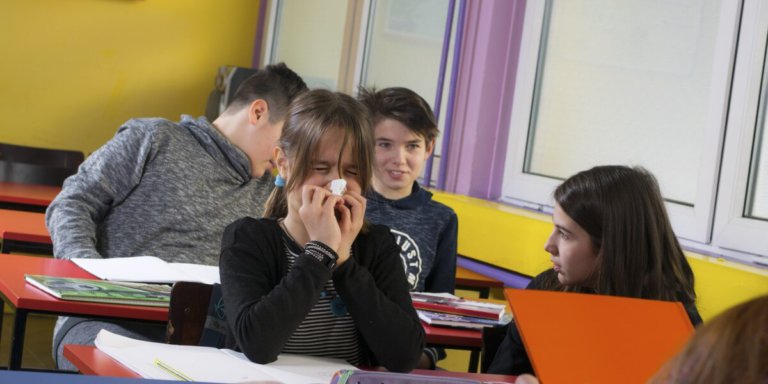
Most people know that frequent hand washing is a must to prevent picking up harmful bacteria and viruses, but a recent science experiment has brought to life just how important it is for kids to practise good hand hygiene in schools.
Conducted by teacher Jaralee Annice Metcalf from Idaho, US, the experiment shared on Facebook has since gone viral.
“We took fresh bread and touched it. We did one slice untouched. One with unwashed hands. One with hand sanitiser. One with washed hands with warm water and soap. Then, we decided to rub a piece on all our classroom Chromebooks,” Metcalf told Parents.com.
As she put it, the results were “so disgusting”. The slice of bread that was rubbed on Chromebooks was the dirtiest, followed by the ones with dirty hands. The results were observed after three to four weeks as it took into consideration the bread’s preservatives which extend shelf life
Interestingly, the slice of bread with hand sanitiser had plenty of bacteria on it. In comparison, the one with hands cleaned from soap and water was fine. This shows that hand sanitiser is clearly not an alternative for good old-fashioned soap and water, despite the attractive marketing and convenient travel bottles.
She told Parents.com, “If the bread had been exposed to air and moisture, the experiment may have gone faster. The breads that were very clearly exposed to different germs grew mold quicker. And ones touched by clean hands plus the soap and water ones were not exposed to the germs that cause the mold growth to quicken.”
“Germs spread rapidly. And it doesn’t matter how often they’re told or how well they’re taught to wash their hands, children won’t always do it properly or enough.”
The experiment results provide another reminder to parents to ensure their school-going children practise good hand hygiene if they want to stay healthy.
According to the American Public Health Association, “Infections are frequently transmitted from person-to-person in pre-K-12 schools due to the close environment, sharing of supplies and equipment and inadequate hand hygiene.”
“Several studies have demonstrated that appropriate hand hygiene can significantly reduce illness and absenteeism from school due to gastro-intestinal or respiratory illness. One intervention with scheduled opportunities for cleaning hands throughout the school day produced as much as a 50 percent reduction in absences.”
Metcalf told Parents.com that the Chromebooks are normally sanitised, but was not for the sake of this experiment. However, not all schools do this, so parents should also make it a point to disinfect their children’s personal items, such as iPads, laptops and smartphones.
I work in schools and it’s bad this year. Pls get your #flu shots, esply if you live in the South or Southwest US or work with or have kids. https://t.co/Uu88OP9urd via @usatoday
— gaelicwitch (@xgaelicwitch) December 18, 2019
This science experiment comes at a time of the year where flu season is at its peak in the US. According to the Centers for Disease Control and Prevention (CDC)’s latest report, “The 2019-2020 season is underway; all regions of the country are seeing elevated levels of flu-like illness.
“CDC estimates that so far this season there have been at least 2.6 million flu illnesses, 23,000 hospitalisations and 1,300 deaths from flu.”
These types of science experiments are an effective way to help children visualise concepts that may be abstract to some, such as how germs spread.
By seeing with their own eyes how bacteria can multiply, it will hopefully stick in their memories so they will remember just how important it is to clean their hands thoroughly.
Besides teaching good hand hygiene, parents should also quarantine their flu-ridden children at home to avoid spreading it to others at school.
Liked this? Then you’ll love…
How students can protect themselves during flu season
New study finds poorer learning outcomes in children with visual impairment







